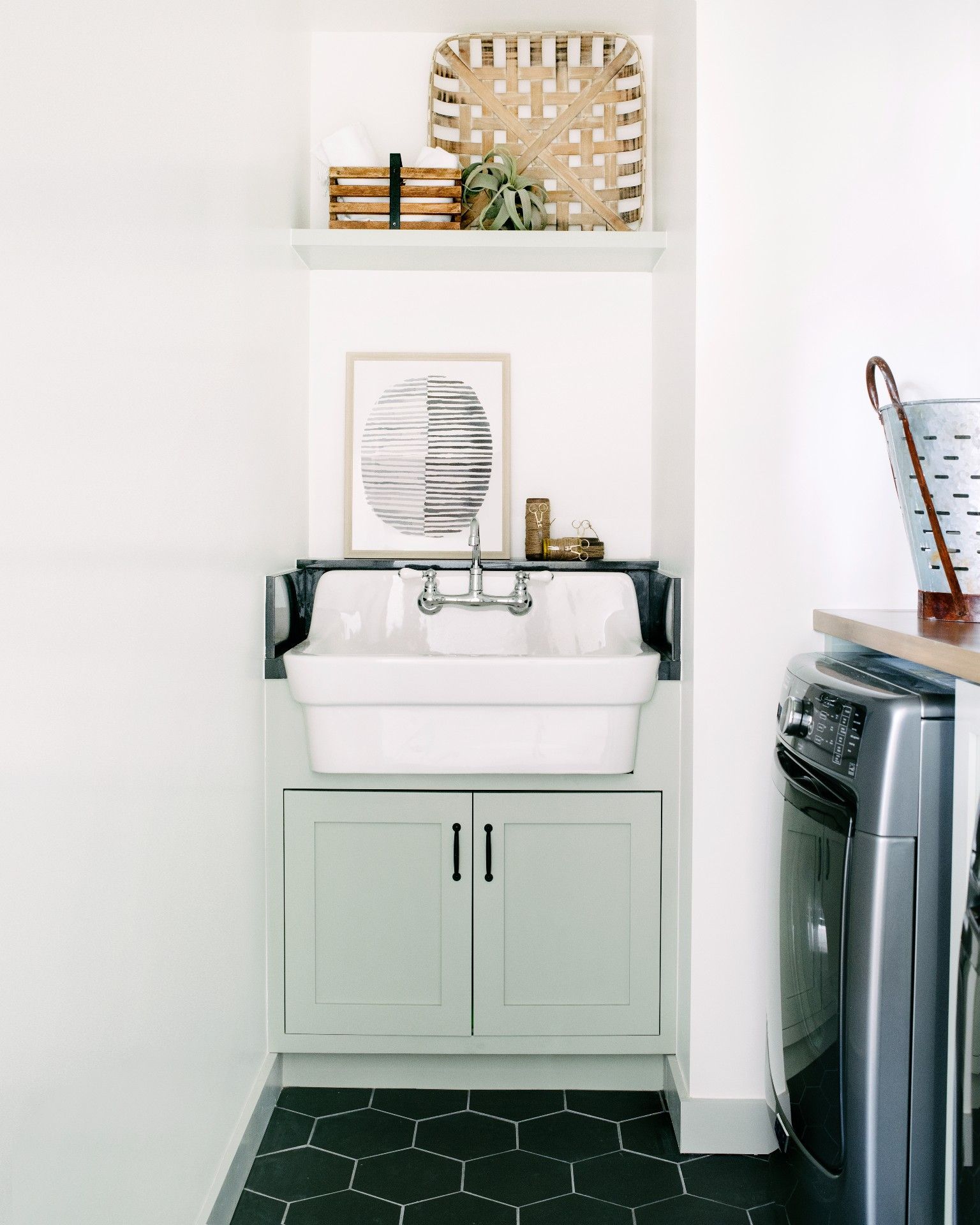How to dry clothes quickly indoors – including 6 ways to make your dryer work faster
Here's how experts dry clothes indoors, minimizing the process – for fresh, wearable clothes, fast
- (opens in new tab)
- (opens in new tab)
- (opens in new tab)
- Sign up to our newsletter Newsletter


Knowing how to dry clothes quickly indoors can often feel like a tall task, especially at this time of year when the weather is cooler, wetter, and less reliable.
While most laundry room ideas do tend to favor a dryer, there are other options, you might like to consider. Perhaps you're washing or cleaning a sensitive garment that should be kept away from heat. Or maybe you want to limit energy costs where possible (the question of how much it costs to run a tumble dryer is increasingly-important). Whatever the reason, learning how to dry clothes quickly has its benefits.
Professionals follow these 5 tips to ensure they cut their laundry-drying time – for freshly clothes that are wearable in almost no time at all.
How to dry clothes quickly – 5 tips to accelerate the process
Whether you're working with small laundry room ideas or cutting back on energy consumption, the experts recommend beginning with these 5 steps.

1. Make tumble drying more efficient
Do you find tumble drying is taking ages? You may not be maxing your dryer's capabilities, so check first if you are doing any of this:
- Not spinning clothes in the washer properly: get the clothes as dry as possible before you dry them.
- Adding wet clothes half way through the drying cycle: let one load dry before you add more.
- Overloading the dryer: smaller, lighter loads will dry faster.
- Not cleaning out the dryer vent and letting lint build up in the filters: both will hinder the dryer vent.
- Not unloading the dryer immediately: clothes will retain some moisture and emerge creased.
- Drying different items and fabrics together: this will slow down the laundry drying process; make it quicker by drying like-for-like at the same time.
2. Dry clothes in low-traffic rooms
You would be forgiven for thinking that the extra heat in high-traffic areas (such as your kitchen) will dry your clothes quicker. However, Joyce French at Home How (opens in new tab) suggests the opposite is true.
'Avoid drying your clothes in any room where you spend a lot of time, as this will help reduce any risks of mold and damp,' Joyce says. In these rooms, she suggests using wall-mounted drying racks [such as this one from Amazon (opens in new tab)] as they don't take up any floor space and can be folded away when not in use. 'A retractable clothesline [such as this one, also on Amazon (opens in new tab)] is another option that may work well as this can be pulled back and put away when it's not in use,' she adds.
3. Consider the ventilation
One of the most effective ways to ensure your clothes dry quickly is to ensure they receive the right amount of ventilation. Joyce recommends positioning your damp washing somewhere close to an open window or in an area with good airflow.
'Don't layer too many clothes in the same part of the clothes airer as this can increase the drying time,' she says. 'Also, try to spread clothes at least an inch apart and turn them over every few hours to help them dry quicker and more evenly.'

4. Hang clothes immediately after washing
It may seem like a simple suggestion, but sometimes the most straightforward ways are the best. This is the case with Joyce's third laundry lesson.
'Avoid leaving your clothes in the washing machine or the laundry basket for too long while they're still wet. This can cause them to start smelling and may result in mold growth,' the expert says. Instead, she urges you to hang your clothes to dry as soon as the washing cycle is finished – to ensure they begin to dry instantly.
5. Use a dehumidifier
Investing in the best dehumidifier you can find has a host of benefits for your home. However, above all, this handy appliance can make drying your clothes quickly easy.
'When you dry clothes indoors, this can lead to extra moisture in the air that can lead to dampness. In winter, it's not always possible to keep windows open for ventilation. This is where a dehumidifier comes in handy,' Joyce says. 'Place it near your clothes airer, and it'll help to dry the clothes more quickly as well as remove the extra moisture from the air.'
6. Ensure clothes don't touch the floor
Finding the best setting for your clothes is one thing, but the placement of your clothes is another.
'Make sure that the clothes are not touching the floor, as this can create moisture and make your clothes take longer to dry,' says Bret Jackson, a professional cleaning expert at Letti & Co (opens in new tab). He adds that you should also try to set it up near a window or door so that the air can circulate. 'If you do not have a clothesline, you may try hanging your clothes over chairs or on a drying rack,' he reinforces.

How long do clothes take to air-dry?
The exact time it takes for clothes take to air-dry depends on a number of factors, including the heat and humidity in your house – and the type of fabric you're working with. However, as a general rule, Bret Jackson, a professional cleaning expert at Letti & Co, suggests it takes around two and four hours to dry clothes indoors.
'Lighter fabrics, such as cotton, usually dry more quickly than heavier fabrics, such as denim. If the room is very humid, it may take longer for the clothes to dry,' he says.
What dries clothes the fastest?
A dryer will dry clothes the fastest in general. But if you are drying clothes quickly without a dryer, Bret Jackson, a professional cleaning expert at Letti & Co, suggests using a fan to help circulate the air and speed up the drying process. 'Just be sure to keep the fan on a low setting so that it doesn't blow your clothes around too much,' he says.

Megan is the News and Trends Editor at Homes & Gardens. She first joined Future Plc as a News Writer across their interiors titles, including Livingetc and Real Homes. As the News Editor, she often focuses on emerging microtrends, sleep and wellbeing stories, and celebrity-focused pieces. Before joining Future, Megan worked as a News Explainer at The Telegraph, following her MA in International Journalism at the University of Leeds. During her BA in English Literature and Creative Writing, she gained writing experience in the US while studying in New York. Megan also focused on travel writing during her time living in Paris, where she produced content for a French travel site. She currently lives in London with her antique typewriter and an expansive collection of houseplants.
-
-
 Which grass seed is best for overseeding? Experts reveal their top choices
Which grass seed is best for overseeding? Experts reveal their top choicesOur advice will help you choose the right one for your lawn and your climate
By Jill Morgan • Published
-
 Before & After: This Bobby Berk-designed kitchen is a masterclass on how to harness the power of color
Before & After: This Bobby Berk-designed kitchen is a masterclass on how to harness the power of color'I wanted a color that was going to be eye-catching but still functioned as a neutral' – here's how Bobby found the balence
By Megan Slack • Published

